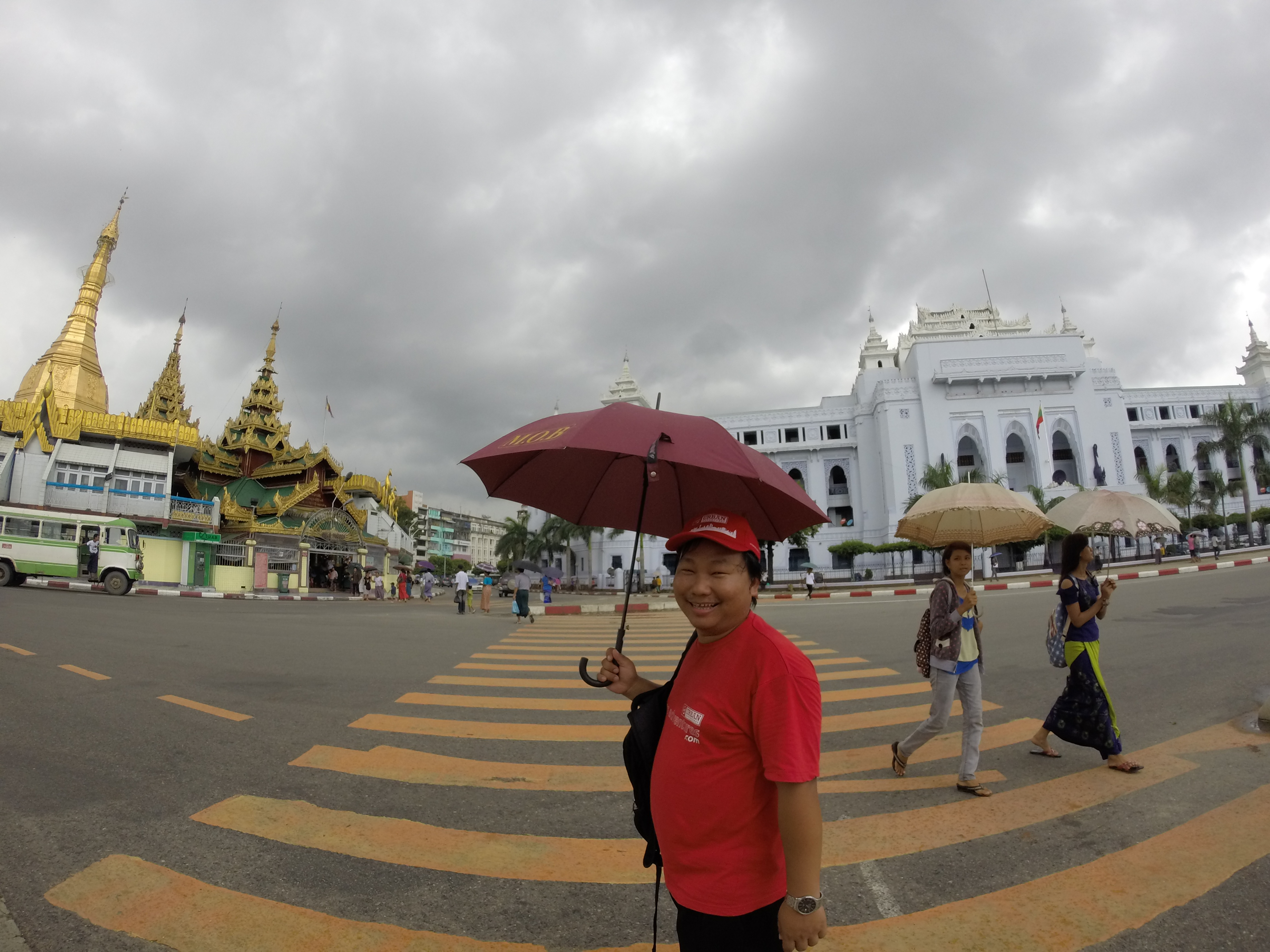
Chaos glimmering with the beauty of golden pagodas and thriving with local life.
That would be Yangon in a nutshell. On arrival, it is a complex maze of roads packed with cars (a challenge to cross alone) and winding streets which will take you in circles. Instinctive navigation fades away, leaving you feeling hot, lost, and jet lagged in a country where few speak English. It is all about finding your bearings with Yangon. It will happen soon enough but you must throw yourself in. The best way to do this is with a local guide who will show you how to cross the road like the Yangonites, ease the complexity of the curving streets, and immerse you in the locality of the bustling city from catching the train to drinking chai in the Indian quarter. Soon enough you will begin to relax and enjoy the unique charm of Yangon.
Here’s what to expect on an Urban Adventures tour in Yangon:
1. Meeting your guide…

…could not be simpler. It’s like he saw a picture of you and knows who he is looking for. We were stood at Sule Pagoda, perplexed in our new environment, wondering where our guide might spring from. With a tap on the shoulder we swung round to see a smiling face, a large red Urban Adventures umbrella and tee shirt. We were ready to start our adventure!
2. Riding like the locals.
Find yourself sat on wooden benches on the bumpy runaway train style ride, squeezed on with the locals of course. Glassless windows scream photograph opportunities as you fly past small stations, home-made houses on the side of the tracks, and small suburban farms.
3. Feed your eyes at the market
Get off the train and straight away you are in the market. That’s right this market is on the tracks; fruit and veg vendors carpeting the small amount of platform space right up to the iron tracks, spreading into a covered area beside the station. You are sure to see people carrying more than you knew a human could carry.
4. Go to Chinatown
Like many cities of our world, there is a Chinatown in Yangon. With store fronts selling mobile phones, DVDs, and Chinese food it is a great area to walk through browsing the array of products and Chinese culture before your eyes.
5. Question time

Ask your guide anything. Whether you come to Burma armed with preconceptions about Yangon, or whether you have no expectations and everything is new; this is your chance to know the answers to all those niggling questions you have, from the history of Yangon to identifying alien looking fruits and vegetables.
6. Pull up a tiny pew
As you walk round Yangon, you will begin to realise how people dine at the street food vendors; sitting on tiny chairs, low to the ground, knees to their chins. It’s so novel, we love it! Just be sure to double check what’s on the menu as you may find yourself unexpectedly eating cow tongue.
7. Tea in the Indian quarter
That is correct, there is a Chinatown and an Indian Quarter…and they are right next to each other! Try local foodie delicacies and chai tea here. Your guide may even get spontaneous on you and offer the local special on the menu for you to try, or purchase something en route. Our guide Joseph treated us to sweet and savoury pancakes from a street vendor which we enjoyed with a cup of Indian Chai in a local tea shop. Delicious.
8. Rubbing shoulders with the locals

Run into locals every step of the way from the friendly train guards, to smiling vendors in the market. Not to mention your awesome local guide. Yangon offers an abundance of friendly local people who are genuinely happy to see you.
9. Feel ready to explore solo
After all that how could you not be prepared to take on Yangon alone!
A few tips…
The best time to do a UA? At the beginning of your trip. Find your way around and have an exciting way to start your adventure in Burma.
To experience this itinerary for yourself, try ‘Let Yangon Take You For a Ride‘. Or, to get a different perspective on local life, try ‘Tradition and Culture in Yangon‘.